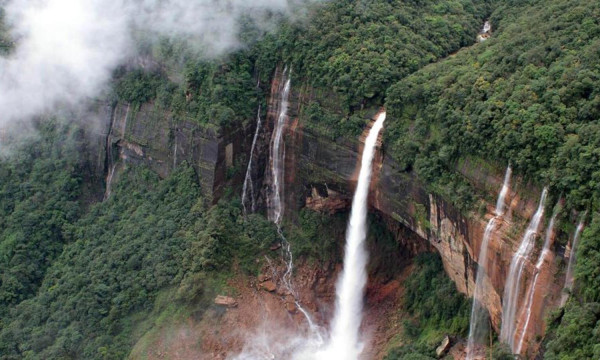Meghalaya’s Mineral Find: Balancing Economic Growth with Environmental Protection

The recent mineral discoveries of bauxite and limestone together with potential lithium and germanium deposits in Meghalaya establish the region as a key location for India's essential strategic resources. Geological Survey of India (GSI) surveys confirmed bauxite presence in Garo, West Khasi, and East Khasi Hills with moderate Rambrai deposits alongside significant East Khasi Hills discoveries. The high-grade limestone deposits which amount to 5,737.82 million tonnes include 494.26 million tonnes in East Jaiñtia Hills and 71.78 million in Sohra and will benefit Meghalaya's cement production. GSI warns that the initial observations about lithium and germanium in coal sediment areas point toward high-tech prospects but require additional research.
These resources promise economic growth, job creation, and industrial development. The aluminum industry depends on bauxite to manufacture materials used in aerospace construction and electric vehicles and lithium serves as a crucial component for clean energy system batteries. Chief Minister Conrad K. Sangma supports sustainable mining through scientific practices that also protect the cultural traditions and land rights of indigenous communities who own most of Meghalaya's territory. Deputy CM Prestone Tynsong has promised to end illegal coal mining yet enforcement issues remain unaddressed according to Justice B.P. Katakey.
Environmental risks loom large. D. Paul who retired from NEHU stated open-cast mining will lead to deforestation and air pollution and water contamination which caused the Byrnihat pollution crisis. He emphasized that compensatory afforestation and post-mining land rehabilitation should be implemented because he doubts the tribal displacement will have positive effects. Hydrogeochemist Vivek Kumar shared worries about deforestation and soil erosion and water contamination from bauxite mining yet pointed out responsible practices of NALCO's and Rio Tinto's methods that include bench mining with ecosystem restoration. Kumar’s research on acid mine drainage offers remediation strategies, emphasizing scientific rigor.
Meghalaya needs to maintain economic progress together with environmental and social conservation. The state needs clear policies together with strict regulations and active community participation to prevent resource curses. Through government-indigenous-scientific partnerships Meghalaya can use its mineral resources responsibly to create economic development while preserving its biodiversity and cultural heritage. Proper management by Meghalaya would enable the state to become a leader in India's critical minerals market without harming its environmental or cultural foundation.

Dominic Maley is an American journalist recognized for his sharp and insightful reporting on social and political issues. His work is known for its depth, integrity, and the ability to highlight critical societal concerns.